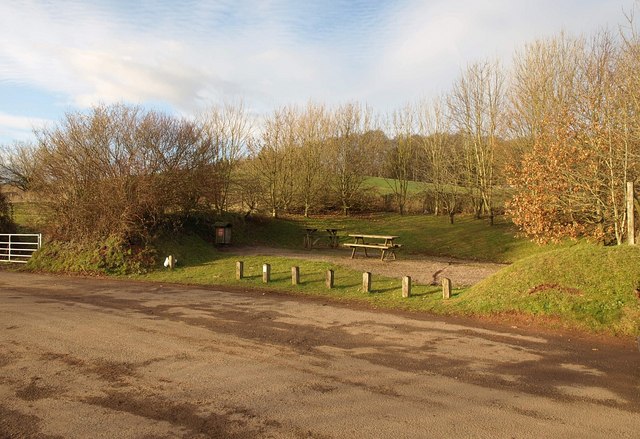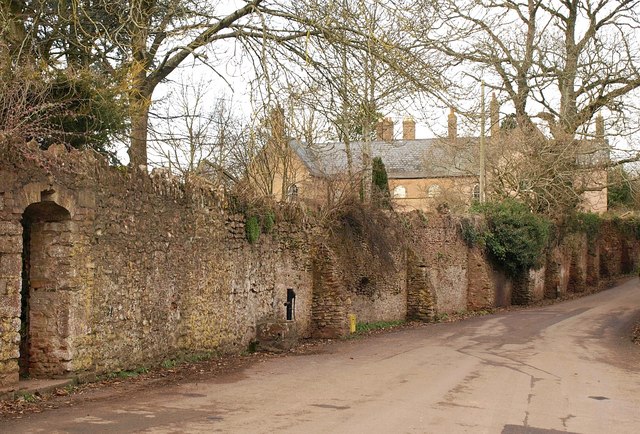Lower Park Kiln Covert
Wood, Forest in Somerset Somerset West and Taunton
England
Lower Park Kiln Covert

Lower Park Kiln Covert is a woodland area located in Somerset, England. Covering an estimated area of around 100 acres, it is a significant natural habitat within the region. The covert is primarily composed of a mixture of deciduous and coniferous trees, providing a diverse and visually appealing landscape.
The woodland is characterized by its dense vegetation, which includes oak, beech, and pine trees. These trees create a lush and vibrant canopy that provides shelter and nesting opportunities for a variety of bird species, including woodpeckers, owls, and finches. The forest floor is covered in a rich carpet of moss, ferns, and wildflowers, adding to the overall beauty of the area.
Lower Park Kiln Covert is also home to a wide range of wildlife. Squirrels, rabbits, and badgers can often be spotted amongst the trees, while deer occasionally graze in the more open areas. The woodland is a sanctuary for many small mammals and insects, contributing to the overall biodiversity of the region.
The covert offers a peaceful and tranquil environment, making it a popular destination for nature enthusiasts and hikers. Several well-maintained trails wind through the woodland, providing opportunities for leisurely walks and exploration. The area is also a designated Site of Special Scientific Interest (SSSI), acknowledging its ecological importance and the need for conservation.
Lower Park Kiln Covert is a valuable natural asset within Somerset, providing a haven for wildlife and an idyllic escape for visitors seeking to immerse themselves in the beauty of nature.
If you have any feedback on the listing, please let us know in the comments section below.
Lower Park Kiln Covert Images
Images are sourced within 2km of 51.033348/-3.2649066 or Grid Reference ST1126. Thanks to Geograph Open Source API. All images are credited.









Lower Park Kiln Covert is located at Grid Ref: ST1126 (Lat: 51.033348, Lng: -3.2649066)
Administrative County: Somerset
District: Somerset West and Taunton
Police Authority: Avon and Somerset
What 3 Words
///result.horns.reserving. Near Milverton, Somerset
Nearby Locations
Related Wikis
The Old House, Milverton
The Old House in Milverton in Somerset, England is a Grade II* listed building dating from the late 14th and early 15th century, although there may also...
Milverton, Somerset
Milverton is a village and civil parish in Somerset, England, situated in the valley of the River Tone 5 miles (8.0 km) west of Taunton. The village has...
Church of St James the Great, Fitzhead
The Anglican Church of St James the Great in Fitzhead, Somerset, England was built in the 15th century. It is a Grade II* listed building. == History... ==
Fitzhead
Fitzhead is a village and civil parish in Somerset, England, situated approximately 6 miles (9.7 km) north west of Taunton. The village has an estimated...
Fitzhead Court and The Manor
Fitzhead Court and The Manor in Fitzhead, Somerset, England was built in the late 16th century and has now been split into two buildings. It is a Grade...
Holme Moor & Clean Moor
Holme Moor & Clean Moor (grid reference ST095260) is a 10.8 hectare (26.7 acre) biological Site of Special Scientific Interest south of Wiveliscombe in...
King's Castle, Wiveliscombe
King's Castle is an Iron Age Hillfort 1 kilometre (0.62 mi) east of Wiveliscombe in Somerset, England. It is surrounded by two banks with a ditch between...
Halse, Somerset
Halse is a village and civil parish in Somerset, England, situated 6 miles (9.7 km) north west of Taunton. The village has a population of 290. == History... ==
Nearby Amenities
Located within 500m of 51.033348,-3.2649066Have you been to Lower Park Kiln Covert?
Leave your review of Lower Park Kiln Covert below (or comments, questions and feedback).












